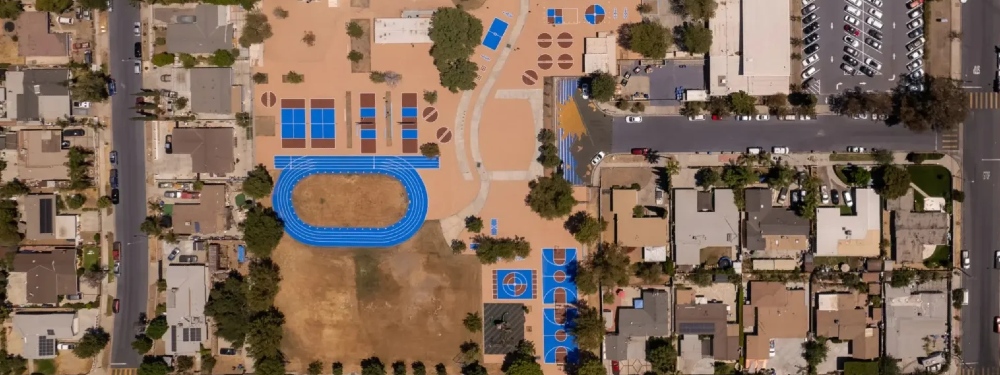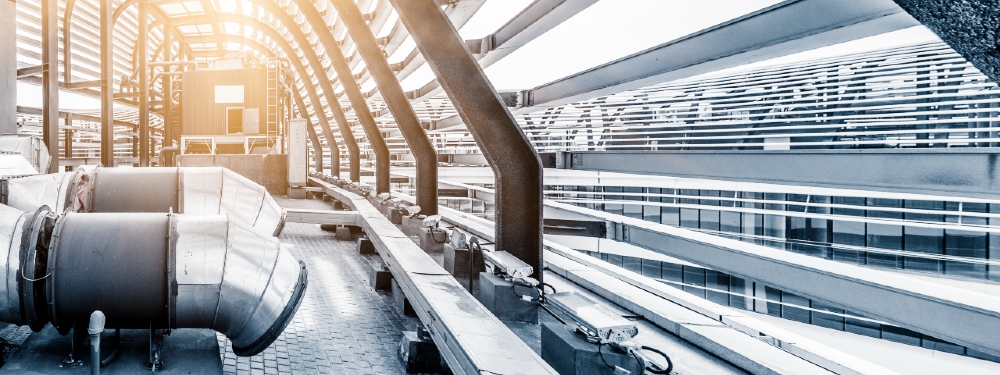Cooler cities, cooler people, cooler planet: The ‘triple win’ of sustainable urban cooling
Cooler cities, cooler people, cooler planet: The ‘triple win’ of sustainable urban cooling
Cities are at the forefront of the climate crisis; they’re heating up at twice the average global rate and they’re a major source of the greenhouse gases (GHGs) that are warming our planet. How can sustainable urban cooling solutions help local governments create cooler cities and protect their residents from rapidly rising temperatures while also limiting further global warming?
As global temperatures rise, our cities are heating up at twice the average rate due to the urban heat island effect, a phenomenon by which human activities and the make-up of a city (e.g. high usage of concrete, steel, and glass, as well as diminished greenspace) create and capture heat, keeping temperatures high long after the sun’s gone down. By 2100, cities across the world could warm by as much as 4.4°C on average, which could be catastrophic for the health, wellbeing, security, and economic productivity of their residents. Even with 1.5°C of warming, 2.3 billion people could be exposed and vulnerable to extreme heat events.
The need for increased access to cooling to avoid extreme heat in our cities is undeniable, and doing nothing is not an option. Unfortunately, conventional cooling solutions like air conditioners are typically energy-intensive and use refrigerants with a high global warming potential (GWP), compounding the problem further by producing the GHGs that are heating up the planet.
Cities, with all their inhabitants, buildings, and infrastructure, are already responsible for more than 70% of the world’s global carbon emissions[1] Net Zero Carbon Cities: An Integrated Approach, World Economic Forum (2021) . Cooling appliances, such as air conditioners, are key drivers of emissions, with up to 10% of demand for electricity in cities used to compensate for the urban heat island effect. If we’re to have any chance of limiting global warming to 1.5°C, then cities need to achieve net-zero emissions by 2050. Clearly, continuing to cool our cities as we currently do is not an option.
So how can we create cooler cities with solutions that doesn’t exacerbate the climate crisis?
Sustainable urban cooling
Sustainable cooling solutions – i.e. solutions that are super-efficient, climate-friendly, and utilize low- or zero-carbon electricity – are essential if we’re to meet our climate and development goals, simultaneously.
Solutions to avoid dangerous heat include urban green and blue infrastructure (e.g. tree cover and waterways), which can reduce ambient temperatures by multiple degrees; better building design (e.g. shading, better building envelopes, ventilation, and reflective materials) that can reduce the need for mechanical air conditioning; district cooling, because it can efficiently cool a large network of buildings; and cooling centers, which can provide much-needed thermal comfort and safety to vulnerable populations during times of extreme heat.
And it’s not simply a case of improving the environmental performance of our cities’ cooling, it’s also about ensuring that access to cooling is equitable and reliable. More often than not, the impacts of urban heat are not evenly distributed, with lower-income and marginalized communities being both the most vulnerable and the least likely to be able to afford or access thermal comfort. For those with access to mechanical cooling, reliability of power supply can be compromised by high demand during heat waves leading to blackouts and knock-on effects on health, livelihoods, supply chains, and stability.
What we need is an integrated, whole-systems approach to accelerate the transition to sustainable urban cooling for all, and to ensure that potential benefits are maximized. In doing so, we can work to reduce temperatures at the city-level, reduce cooling demand at the building level through passive design and cool materials, and ensure that any remaining demand for mechanized cooling is met using efficient, climate-friendly technologies (e.g. super-efficient air conditioners that use ultra-low GWP refrigerants).
Supporting cities’ transition to sustainable cooling for all
Local governments that are looking to create cooler, healthier and more liveable cities are faced with a wide variety of options, so knowing how and where to start can be an overwhelming task. Luckily, there is a lot of information and support available to help cities transition to sustainable cooling for all.
The new Sustainable Cooling Handbook for Cities from the UN Environment Programme’s Cool Coalition, RMI, the Global Covenant of Mayors, Mission Innovation, and the Clean Cooling Collaborative, with support from WWF Cities, provides a framework for implementing sustainable cooling and extreme heat strategies at the city or district level for both developing and developed countries. In addition to recommending the development of a holistic, citywide cooling action plan, the guide showcases several interventions that can be implemented by city governments:
- Developing heat-resilient urban design and infrastructure via urban planning, nature-based solutions, and cool surfaces can cut the urban heat island effect and reduce the need for mechanical cooling in buildings.
- Implementing district cooling systems in densely populated urban areas can provide thermal comfort with significantly reduced climate impact.
- Improving the energy and thermal efficiency of buildings through better design and construction not only reduces the urban heat island effect, but also provides thermal comfort within the buildings, which reduces the need for mechanical cooling.
- Leading by example by ensuring all city-controlled assets (i.e. buildings, cooling equipment, and transport) are efficient and climate friendly. City governments must practice what they preach, and showcase successful models.
- Advancing equity and cooling access through community-centric initiatives like cooling centres, heat alerts, wellness check programs, and community tree-planting.
- Raising awareness about urban heat and sustainable urban cooling among different communities is vital for success. Outreach activities could include guides and educational materials, demonstration projects, and behaviour change campaigns.
- Investing in capacity-building and training among city authorities and other key actors is necessary for the successful development, implementation, and enforcement of urban cooling initiatives.
- Identifying and securing funding and financing sources is critical for the success of these interventions. There are a variety of options available for sourcing funds, including taxes, user fees, fines or penalties, official development assistance, public-private partnerships, and climate funds.
Many cities have also started to designate cooling champions to lead the charge against extreme heat, which just so happens to be one of the handbook’s recommended actions. So far, Miami (USA), Athens (Greece), and Freetown (Sierra Leone) have all appointed Chief Heat Officers (CHOs), and Seville (Spain) has recently announced that they will start to name and rank heat waves like other regions do tropical storms and hurricanes. And yesterday, at a COP26 side event, Mayor Daniella Levine Cava announced that from 2022, Miami will establish an annual ‘heat season’ that will run from May 1 until October 31. In addition to helping address urban heat in Miami, Athens, Freetown, and Seville, these announcements will also help to raise awareness of extreme heat as a global issue, encouraging other cities to follow suit.
The time to act is now
If we are to limit global warming to 1.5°C, as committed to by national governments in the Paris Agreement, then we need cities to achieve net-zero emissions by 2050. And in order to achieve net-zero by 2050, cities need to take urgent action to decarbonize their buildings and infrastructure, and build resilience to protect residents from rising temperatures.
There’s a long road ahead of us, but there’s plenty of support available to cities, as well as other stakeholders, to secure the progress we need. Tools like the Sustainable Cooling Handbook of Cities are providing actionable guidance for cities to support the development of sustainable cooling initiatives that can cut emissions and provide relief from the heat. Networks like the Cool Coalition and the Extreme Heat Resilience Alliance, and campaigns like the Race to Zero and the Race to Resilience, are facilitating collaboration among stakeholders to stimulate ambition and drive change within urban heat, sustainable cooling, and beyond.
For city officials looking to learn more about the threat of urban heat and how sustainable cooling can help protect people from extreme heat while supporting climate mitigation and adaptation efforts, there are a number of events taking place at COP26 that shouldn’t be missed. And the road doesn’t stop at COP26. Join the World Bank and partners on December 2nd for their ‘Making Cities Cooler with Nature’ webinar. And in 2022, the year of implementation, there will be more opportunities for cities and countries alike to highlight how they are taking action against extreme heat.
Our cities need clean cooling, both to protect urban communities from the deadly heat that is becoming all too familiar, and to mitigate the GHG emissions associated with cooling activities that warm our world even more. The world needs cities to act now.




